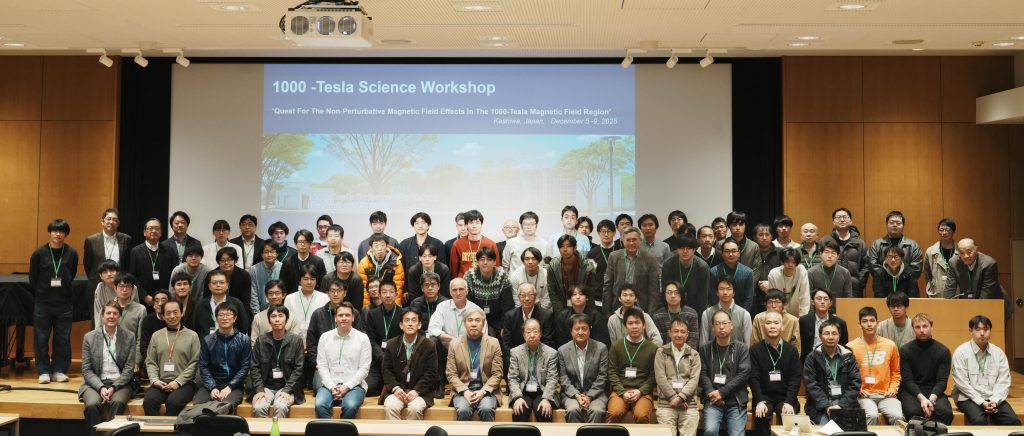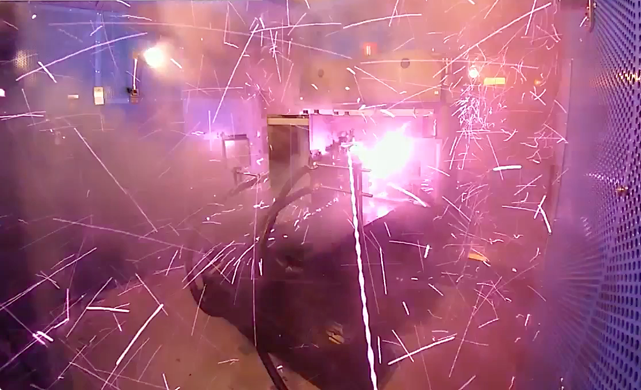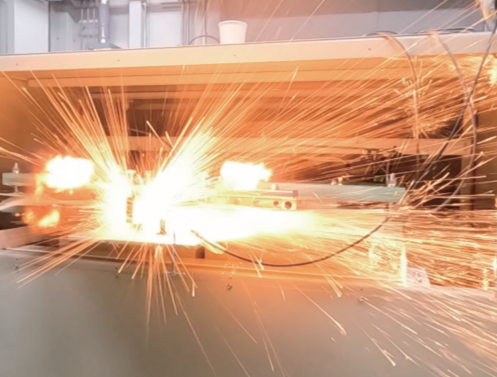The international workshop was successfully finished.

The best presentation awards for young scientists were chosen as shown below.
| Gold Prize | ||
| Soichiro Yamane | Kyoto University | Advancement of the magneto-optical Kerr-effect measurement under pulsed magnetic fields |
| Silver Prize | ||
| Haruto Kaminakamura | Institute of Science Tokyo | Observation of spontaneous in-plane anomalous Hall effect in ferromagnetic oxide ultrathin films |
| Yuki Tanaka | The University of Tokyo | Thermoelectric properties of perovskite line-node semimetal CaIrO3 in quantum limit state |
| Bronze Prize | ||
| Reon Ogawa | The University of Tokyo | Current Status of the MCE Measurement Technique Development Under Destructive Pulsed High Magnetic Fields |
| Kosuke Honda | Kyoto University | Detection of hydrogen absorption of Pd by Sagnac-Interferometer-Based Magneto-optical Kerr effect |



About the 1000-Tesla magnetic field region
A magnetic field is universally present in nature, and fields exceeding 100,000 Tesla have been observed in the universe, though their non-perturbative effects remain unclear. By utilizing an artificially generated 1000 T magnetic field that is highest on Earth, researchers aim to understand its effects on electrons, potentially leading to groundbreaking phenomena such as the creation of new crystals and insights into the mechanisms of natural formation. This workshop seeks to advance research by sharing and discussing the latest findings on such non-perturbative magnetic field effects.
A magnetic field is a relativistic electric effect and is essential for understanding the properties of electrons. At 1000 T, the energy imparted to electron spin is equivalent to the thermal energy at about 1000°C, which could significantly alter the structure and properties of materials. Conventional studies have used up to 10 T with superconducting magnets, and MRI machines typically use 3 T, with the destruction limit due to electromagnetic forces around 100 T. However, in 2018, the Institute for Solid State Physics at the University of Tokyo successfully generated a 1000 Tesla magnetic field, and in 2023, the “1000 Tesla Science” project (KAKENHI: 23A201) was launched. This workshop is supported by the project.


Right photo: Explosion of a single-turn coil accompanying the generation of a 110-tesla magnetic field using PINK-02 at the SACLA X-ray free-electron laser facility.
Left photo: Explosion of the coil caused by the generation of an ultra-high magnetic field using the electromagnetic flux compression method.
Special Thanks
Sponsors


